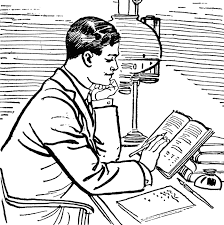
En oraciones compuestas en tiempo pasado a menudo hacemos referencia a una acción, más o menos larga, que es interrumpida por una más corta:
Yo estaba durmiendo cuando sonó el teléfono
Podemos observar que “Yo estaba durmiendo…” describe una acción más larga que la de “…sonó el teléfono”
Esto en inglés es idéntico.
I was sleeping when the phone rang
Como podemos observar, en inglés, la acción larga se expresa en pasado continuo (I was sleeping), mientras que la acción corta que viene a interrumpir a la acción larga se expresa en pasado simple (the phone rang).
A veces, la acción larga viene introducida por la conjunción while:
The phone rang while I was sleeping
Otras combinaciones de pasado (de 4º de ESO en adelante)
• Acciones encadenadas: Una empieza cuando acaba la otra. En este caso todos los verbos van en pasado simple:
I arrived home, opened the door and switched on the lights
• Acciones paralelas: Se trata de acciones simultáneas, de duración similar y ninguna interrumpe a la otra. Aquí utilizaríamos el pasado contínuo en los dos casos
I was working on the computer while my wife was reading a magazine
EJERCICIOS
TODOS LOS NIVELES DE 3º ESO a 4º BACHILLER
http://www.ego4u.com/en/cram-up/grammar/simpas-paspro/exercises?ex07
A PARTIR DE 4º DE LA ESO
http://www.ego4u.com/en/cram-up/grammar/simpas-paspro/exercises?ex08
http://www.ego4u.com/en/cram-up/grammar/simpas-paspro/exercises
http://www.ego4u.com/en/cram-up/grammar/simpas-paspro/exercises?ex02




